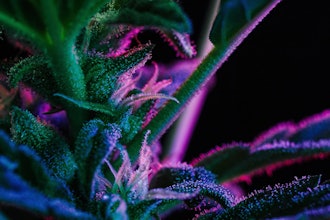
Ozone is a strong oxidizing agent that can be used to minimize contamination of cannabis crops during the cultivation stage. But it can also have some potentially harsh side effects.
Kyle Baker, chief strategy officer at EcoBuds, has often warned of the potential harm in using ozone to eliminate bacteria, fungus, mold, spores, terpenes and other biological threats to cannabis plants. His company instead uses a proprietary, EPA-registered biocide.
“At the heart of what we do, we’re a bio-security company,” he said, describing EcoBuds’ work as quality control at the beginning of the cannabis supply chain.
Baker has been with EcoBuds since it started in 2017. The focus has been on developing chlorine dioxide into an automated and insured system. In the cannabis cultivation space, EcoBuds manages disease-related and compliance issues for passing tests. That includes accounting for powder and mildew, aspergillus, pythium and other potential contaminants.
Baker isn’t necessarily anti-ozone. He said that just like any other chemistry, it has good specific uses like water treatment, where it can be very efficacious. Ozone also has a long history of being used to clean out vats for wine and beer making.
“But you have to understand its chemistry. It is the highest reactive species of the oxidants. It’s a known carcinogen and a known mutanogen. If you’re in the medical field, they limit the amount of ozone that can be used or generated by devices because it’s a danger to patients. And in most other industries, ozone isn’t really used because of those same factors. So, you have to look at its limitations and what you’re applying it to,” he said.
Ozone for agriculture is typically machine-generated and can be applied as a gas to crops like cannabis. But Baker warned that it’s incredibly reactive and, in the presence of monoterpenes (or volatile organic hydrocarbons), which cannabis creates in plentiful amounts, it can create formaldehydes, aldehydes and other ultra-fine particulates that are hazardous to people’s health. Those health hazards extend to both cannabis operation employees and consumers.
Formaldehyde is used in some derivative forms like formalin in industries like fish farming. But there are lengthy waiting periods after fish are treated with formalin before they can enter the food supply, which helps to minimize risk to consumers. With cannabis and monoterpenes like alpha- or beta-pinene, there’s potential for conversion to formaldehyde, which can stay in cellulose material for a long time.
“And if you don’t understand how long that is, then it’s probably not a good idea to put that on the shelf and sell it to an at-risk consumer,” Baker said.
Baker believes that there’s a high probability that ozone is being used in an unsafe way in the cannabis industry, or in a way that’s not allowed to be used in parallel industries. “And it could have some extremely deleterious effects not only on employees but also consumers.”
Baker did say that there is likely a way ozone can be safely used in the cannabis industry but that it needs to be determined with more understanding. For instance, he said, most laboratories aren’t currently testing for formaldehyde or aldehyde in cannabis.
Ultimately, the risk for consumers comes down to potentially contaminated cannabis including flower, edibles and extracts. Unlike the food industry, where there’s a fairly robust structure in place to help ensure product safety, there are currently no manufacturing standards in the cannabis industry. Until federal cannabis legalization happens, it’s up to states to regulate and Baker said they often lack the capacity to manage all the aspects of cannabis production.
So, it may be a while before ozone can be regulated for use in a way that's safe for consumers and still advantageous to cannabis cultivators.






















